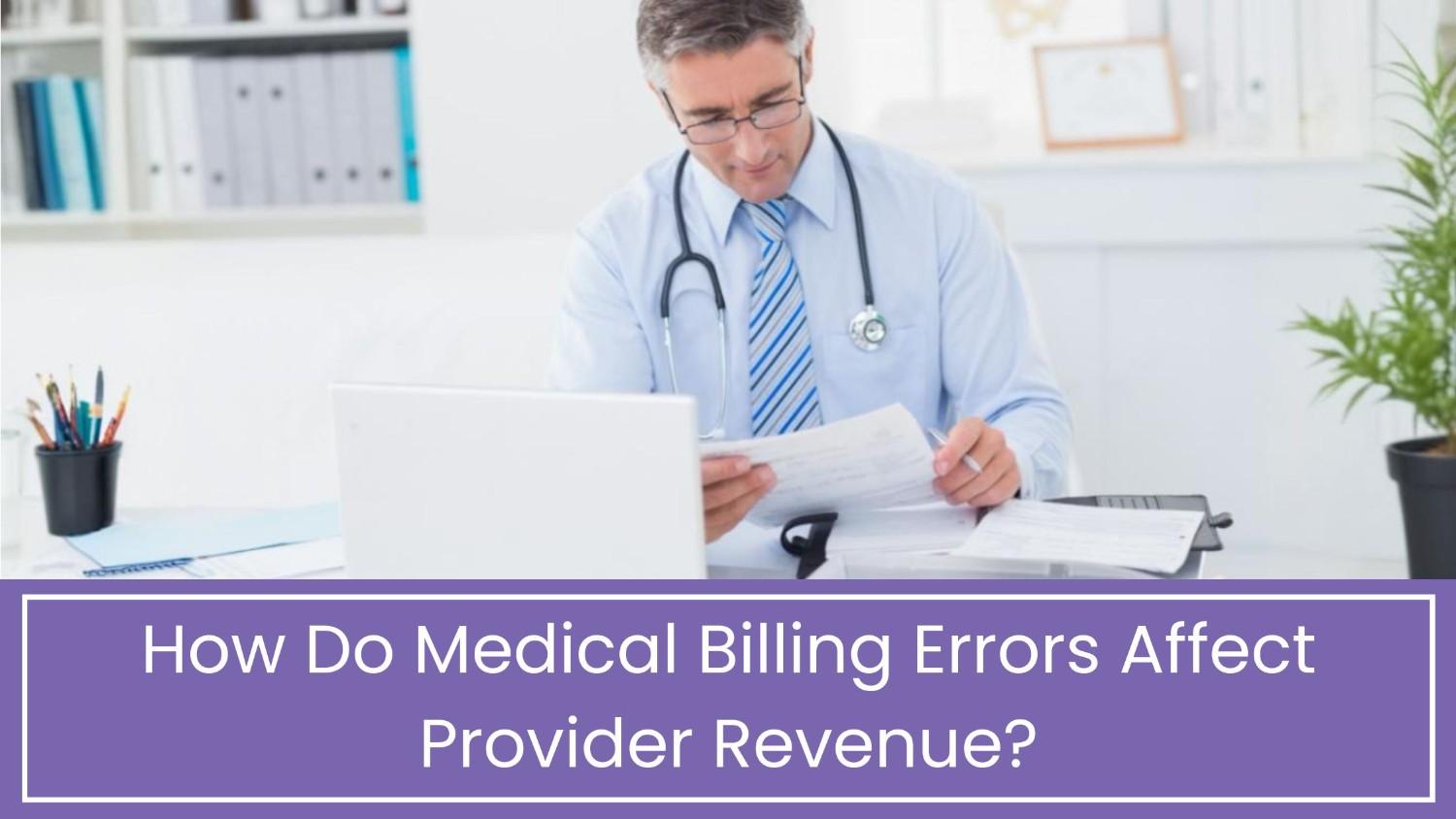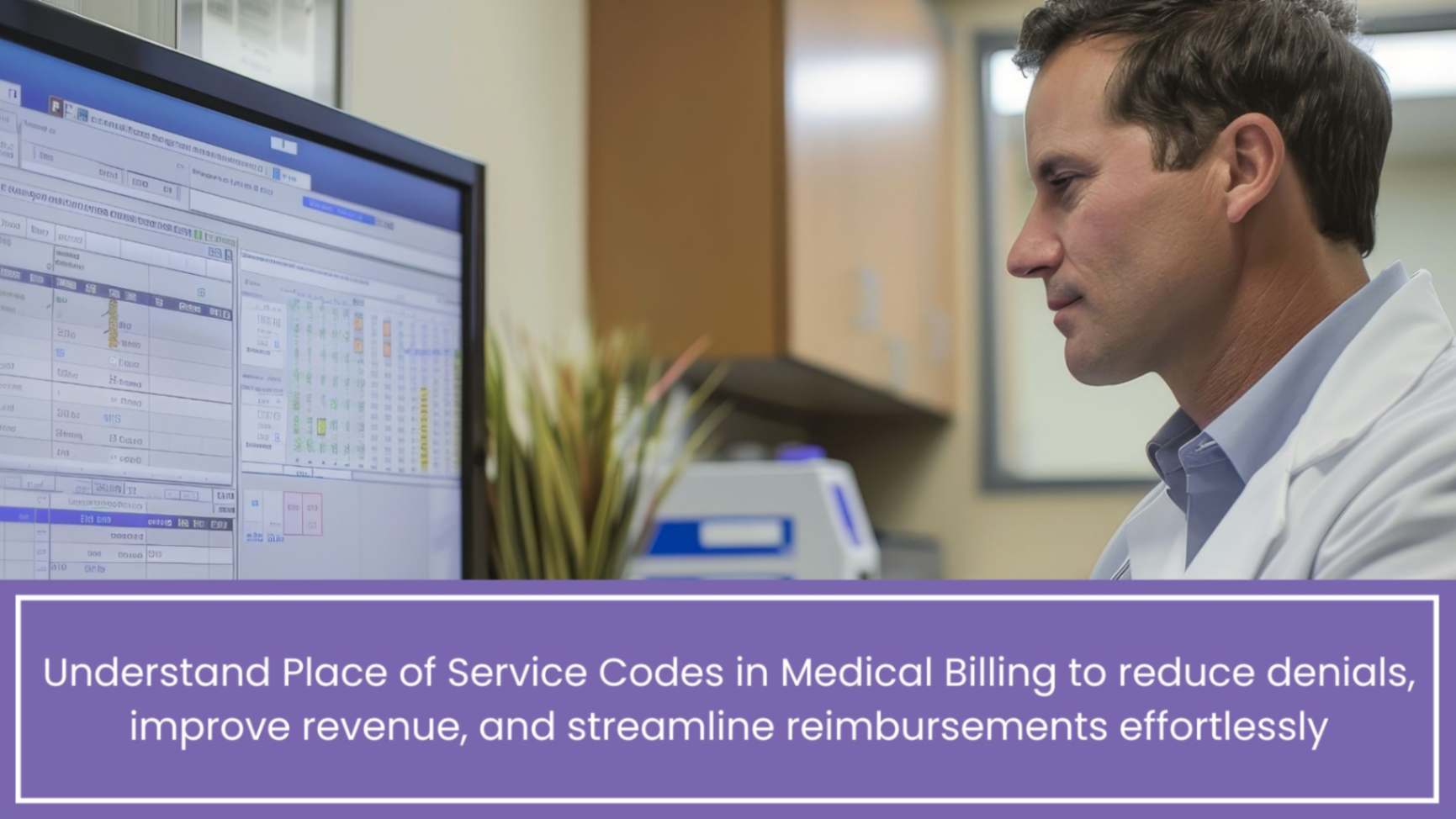Medical Billing Errors and Provider Revenue Loss
Medical Billing Errors and Provider Revenue Loss continue to be a serious concern for healthcare organizations, costing providers millions each year. In 2025, these errors will have an even greater impact as payer scrutiny increases, patient cost-sharing grows, and compliance regulations become more complex. From lost data and inaccurate coding to eligibility mistakes and audit risks, every error delays reimbursements and drains revenue. This blog explores key data, emerging market trends, and innovative solutions such as AI-powered coding and claim management tools. Discover how providers can minimize denials, safeguard cash flow, and rebuild patient trust through smarter systems and reliable partners like Practolytics.
Table of Contents
How Do Medical Billing Errors Affect Provider Revenue?
Healthcare providers need steady payments to run their practices and help patients. But billing mistakes keep hurting their income every year. Small errors in codes, patient info, or insurance details can cost a lot.
In 2025, with tighter rules, higher patient costs, and insurers using more AI, these errors are even more expensive. This blog covers why mistakes happen, how they impact revenue, key industry changes, and smart fixes providers are using now.
Why Billing Errors Are More Dangerous in 2025
Medical billing services are tough. Doctors and clinics handle endless codes, insurance rules, and changing laws. Why is it harder today?
Stricter claim checks—Insurers use AI to find tiny errors. Mistakes mean denials.
More patient payments—High deductibles mean patients pay more. Unclear bills delay payments.
Tighter rules— Audits are rising. Errors bring denials and fines.
Old systems—Many small offices use outdated tools. This causes more errors.
Bottom line: Billing errors aren’t just slips—they hit cash flow, compliance, and patient trust.
Key Numbers That Show the Impact
The American Medical Association says 15% of claims get denied the first time. Most denials are from billing or medical coding mistakes.
- The Healthcare Financial Management Association found that each denied claim costs $118 to fix.
- Research shows 27% of denials happen because of eligibility errors—like not checking coverage correctly.
- Becker’s Healthcare reports that billing errors cost U.S. providers over $20 billion every year.
These facts show the problem: fixing mistakes after they happen wastes money, time, and staff effort.
Common Medical Billing Errors That Hurt Revenue
1. Coding Errors
Using the wrong medical codes is a common issue. This leads to claim denials, lower payments, or audits.
2025 Focus: AI tools now suggest codes from doctor notes, with staff checking them. This cuts denials and risks.
2. Missing Patient Details
Errors like wrong birthdates or insurance IDs cause immediate rejections. Teams waste hours fixing and resending claims.
Key Insight: Checking patient details upfront with real-time tools stops most errors.
3. Coverage Slip-Ups
Claims get denied if approvals weren’t secured or coverage lapsed. This delays payments and patient care.
2025 Shift: More insurers now require approvals even for basic care. Practices without automation struggle the most.
4. Duplicate Billing
Sending the same claim twice gets denied and raises red flags with payers. It can even trigger compliance reviews.
Industry Insight: Modern systems now catch duplicates before claims go out.
5. Upcoding and Downcoding
Upcoding: Charging for a higher-cost service than what was done.
Downcoding: Charging less to avoid audits.
Both hurt revenue through denials or leaving money on the table.
6. Missed Deadlines
Claims filed late get automatically rejected. Reversing this is rare.
Trend: AI tools now track deadlines and alert teams before claims expire.
7. Human Error from Burnout
Billing teams handle heavy workloads and tight deadlines. When staff burn out, mistakes happen in manual tasks like data entry and compliance audit tracking.
Fact: Becker’s Healthcare found 60% of providers lack enough billing staff, making errors more likely.
How Billing Errors Directly Impact Revenue
Higher Denial Rates
Mistakes make claims get rejected. Staff must fix and resend them. This delays income and costs more money.
Delayed Cash Flow
Instead of getting paid in 30–40 days, errors push payments past 60 days. For small clinics, this creates cash shortages.
Higher Staff Costs
Fixing errors takes extra staff time. Each resubmission adds costs without bringing in new revenue.
Audit Risks
Wrong codes or missed rules can trigger audits. Sometimes, this leads to fines or having to pay money back.
Patient Trust Issues
Billing mistakes surprise patients and hurt trust. With more patients paying directly, errors mean less money collected.
Industry Trends & News (2025)
AI in Billing: More healthcare providers are using AI tools to fix billing errors before claims go out. This saves time and money.
EHR Integration: Patient check-in systems now include instant insurance checks. This helps avoid claim denials later.
Government Push: CMS is pushing for digital claims and real-time insurance checks. Providers need to adapt.
Outsourcing Growth: By 2026, 78% of providers will outsource billing. Complex rules make this necessary.
Patient Payment Tech: Digital payment tools with upfront cost estimates are growing. Patients pay faster this way.
Best Practices to Reduce Billing Errors
Automate Eligibility Checks—Confirm coverage when you book appointments, not later at check-in.
Use AI Coding Help—Get AI code ideas, then have your team check them.
Train Staff Often—Keep your team sharp on the latest payer rules and CMS updates.
Track Denial Patterns – Find repeat errors and fix the root cause fast.
Build Audit-Ready Systems – Keep clean coding logs and compliance reports on hand.
Talk Costs Early – Share estimates upfront to prevent billing surprises.
The Future of Billing Accuracy
By 2026, billing accuracy will need a team approach: AI for routine tasks and people for tough cases. When payers and providers share data instantly, errors drop and payments move faster.
The bottom line? Fixing mistakes later isn’t an option. Stopping errors upfront is the only way that works.
Conclusion: Partnering with Practolytics for Error-Free Billing
Medical billing mistakes cost you money and time. They also put your practice at risk. In 2025, payers have stricter rules, and patients expect more. You need to fix billing errors fast.
Practolytics stops billing problems before they start.
Here’s how we help:
- AI Claim Checks: Catch errors before you submit claims.
- Better Coding: AI tools plus expert reviews for accurate codes.
- Denial Tracking: Find out why claims fail and stop repeats.
- Easy EHR Links: Connect simply for eligibility and claims.
- Patient Payments: Give clear estimates and easy digital pay.
With Practolytics, you get fewer denials, faster payments, and less risk—while keeping patients happy.
Bottom line: Billing errors drain your cash. With the right partner, you can turn billing into a profit boost.
ALSO READ – Simplifying Revenue Management: How Medical Billing Services Empower Small Practices
Talk to Medical Billing Expert Today — Get a Free Demo Now!






